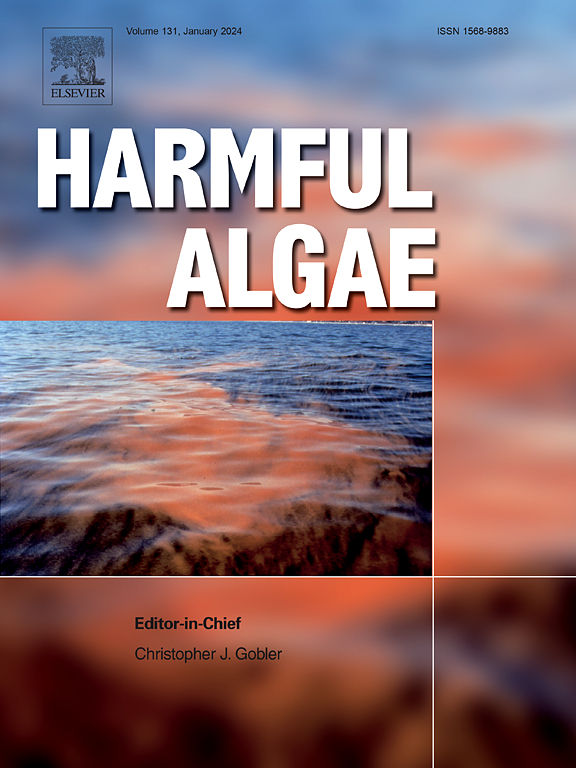Germination of phytoplankton resting cells in surface sediments collected from the tributary and littoral zones of Lake Taihu, China
IF 5.5
1区 生物学
Q1 MARINE & FRESHWATER BIOLOGY
引用次数: 0
Abstract
Phytoplankton responsible for harmful algal blooms (HABs) may originate from the seed bank present in lake and river sediments. In this study, we investigated the germination of phytoplankton in the laboratory from resting cells in sediments collected during spring from four tributary and littoral zones of Lake Taihu (east, south, west, and north), the season before HABs typically occur. We evaluated the potential for germinated phytoplankton to contribute to HABs. We found that 26 species from three phyla including Cyanobacteria, Bacillariophyta, and Chlorophyta germinated from the sediment during the 15-day incubation experiment. The germinated phytoplankton species from the sediments collected in most areas were moderately or very similar, but dominant species exhibited different temporal and spatial distributions. The densities of germinated cells for different phytoplankton species varied at different times during the incubation period. Cyanobacteria Microcystis spp. (1,511 cells g−1 wet weight) and Bacillariophyta Melosira sp. (2,865 cells g−1 wet weight) had the highest cell densities after 10-day incubation, whereas Chlorophyta had the highest cell density (54 cells g−1 wet weight) after 15-day incubation. There was a high number of Cyanobacteria resting cells that could germinate from the seed bank preserved in the sediments, suggesting potential risks of HABs throughout Lake Taihu.
太湖支流和沿岸表层沉积物中浮游植物休眠细胞的萌发
造成有害藻华的浮游植物可能起源于存在于湖泊和河流沉积物中的种子库。在本研究中,我们在实验室中研究了在春季收集的沉积物中浮游植物的发芽情况,这些沉积物来自太湖的四个支流和沿岸地区(东、南、西、北),通常是赤潮发生之前的季节。我们评估了发芽浮游植物对赤潮的贡献潜力。在15天的培养实验中,我们发现沉积物中萌发了蓝藻、硅藻和绿藻等3门26种植物。大部分地区沉积物中浮游植物的萌发种类一般或非常相似,但优势种的时空分布存在差异。不同种类浮游植物的萌发细胞密度在孵育期间的不同时期有所不同。微囊蓝藻(1511个细胞g−1湿重)和芽胞硅藻(2865个细胞g−1湿重)在培养10天后的细胞密度最高,而绿藻在培养15天后的细胞密度最高(54个细胞g−1湿重)。沉积物中保存的种子库中有大量的蓝藻休眠细胞可以发芽,这表明整个太湖存在赤潮的潜在风险。
本文章由计算机程序翻译,如有差异,请以英文原文为准。
求助全文
约1分钟内获得全文
求助全文
来源期刊

Harmful Algae
生物-海洋与淡水生物学
CiteScore
12.50
自引率
15.20%
发文量
122
审稿时长
7.5 months
期刊介绍:
This journal provides a forum to promote knowledge of harmful microalgae and macroalgae, including cyanobacteria, as well as monitoring, management and control of these organisms.
 求助内容:
求助内容: 应助结果提醒方式:
应助结果提醒方式:


